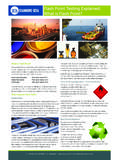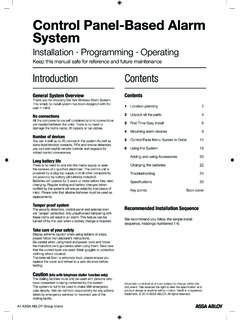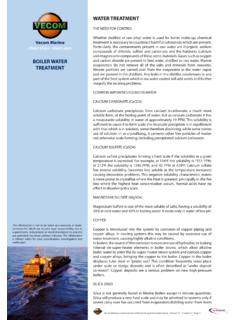Transcription of Photographing A Dim Flame. - NHVSS
1 Photographing A Dim flame . By Garry K. Smith Newcastle and Hunter Valley Speleological Society. Published in Underground Photographer : Autumn 1998, Issue 11, Pages 6-7 Readers may remember my article in UP5 The Unseen Hazards Of Cave Photography . This article describes Foul Air in a cave atmosphere and how a simple Naked flame Test can be used to detect reduced oxygen (O2) concentrations which also indicates an elevated carbon dioxide (CO2) concentration. The photography of a strong flame as is emitted from a burning candle, match or cigarette lighter in good air is a reasonably straight forward exercise provided that the background is sufficiently dark so as not to wash out the flame .
2 Photographing a very weak flame does add some complication to the process and setup. To give readers an insight into the reason for wanting to photograph a weak flame and how it occurs, I have included a few paragraphs to explain the background. 'Foul Air', sometimes called 'Bad Air', is a cave atmosphere which has a noticeable abnormal physiological effect on humans. In limestone caves, 'foul air' can be described as containing greater than carbon dioxide (CO2) and/or lower than 18% oxygen (O2) by volume. The first signs of high CO2 include increased heart and breathing rates, headaches, clumsiness, fatigue, anxiety and loss of energy.
3 Without sophisticated measuring equipment, the best advice is if you or a member of your group experiences any of the common side effects of CO2, carry out a simple flame test with a butane cigarette lighter. If the flame fails to ignite, notify others in the party and the group should vacate the cave in a safe manner. The 'naked flame test' can be undertaken by igniting a match or butane cigarette lighter or carrying a lit candle into suspected foul air. If the flame is extinguished, foul air is present. Where possible a butane cigarette lighter should be used to reduce unpleasant fumes emitted from matches burnt by people testing air quality in the confines of a cave.
4 A cigarette lighter when lit in an atmosphere which will support combustion of butane will burn with the flame extending directly from the jet. When this lit cigarette lighter is slowly lowered into an atmosphere that will not support combustion (lower O2, higher CO2 concentration), an interesting phenomena occurs. The flame will magically stay burning where the atmosphere will support combustion, just above the interface between the high and low CO2 concentration, while the lighter is several centimetres below this interface. As explained later, in cave atmospheres with a gradual transition to foul air the flame reacts a little differently.
5 In the CO2 Pit of Gaden Cave (WE-2) Wellington, NSW, a butane lighter was lit in good air where the flame extended down to the gas jet. It was gradually lowered into Pit and the 25mm high flame stayed burning just above the oxygen deficient interface. The lighter body continued to be lowered until the 25 mm flame remained burning some 75 mm away from the lighter, in other words, the base of the 25 mm flame was 75 mm away from the cigarette lighter jet. Clearly at this depth in the Pit the O2 was now insufficient to support the combustion of butane as it issued from the lighter but 75 mm higher there was sufficient oxygen.
6 This phenomena can not occur with the solid fuels, such as matches and candles, as the heat from the flame is required to vaporise the volatiles which then burn. When lowered further into the Pit the butane lighter flame was extinguished. Using the same type of cigarette lighter (with no flame adjustment) in a caves with a more gradual transition to fouls air, another phenomena occurs at a critical point in the concentration of foul air (lack of oxygen 15%O2). The butane gas will ignite but the flame will quickly rise up from the gas jet until a very weak flame remains magically dancing some 50 to 75 mm away from the lighter.
7 In this situation the butane issuing from the lighter must mix with sufficient O2 in the deficient atmosphere before combustion can occur. Getting back to how good quality photos are taken of a weak butane lighter flame , I use slide film - which is unforgiving if the incorrect exposure is used. With 64 ASA Kodak Kodachrome slide film, the secret is to put the camera on a tripod, set the lens at a reasonably large aperture ( ), slow the camera down to 1 second shutter speed, use the flash remotely and direct illumination so that the background walls (rock) behind the flame is not lit.
8 This reduces the chance of washing out the weak flame . At the same time the flash needs to illuminate the subject model carrying out the lighter test. The model must rest their hand on a rock, keep perfectly still and hold their breath to reduce air movement, thus allowing the weak flame to remain magically burning in the one location above the lighter. Because of the reasonably long exposure time (1 second), the flash was hand held and fired manually with the button on the back of the electronic flash unit. An example of how air movement can affect the flame is shown in the right hand photo above.
9 Bear in mind that the urge to breath is pretty strong in an atmosphere containing high CO2 and reduced O2, so don't be too long about taking the photo. Jenny Whitby in Grill Cave, Bungonia NSW. Australia performs the flame test for foul air. The CO2 on this occasion was measured at 5% with a Drager Meter. Photo by Garry K. Smith.






